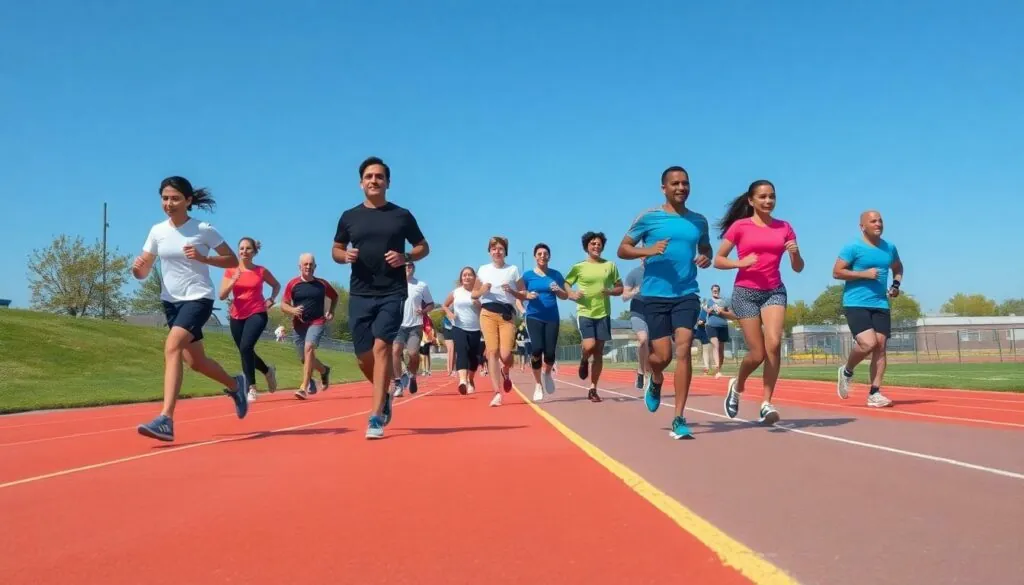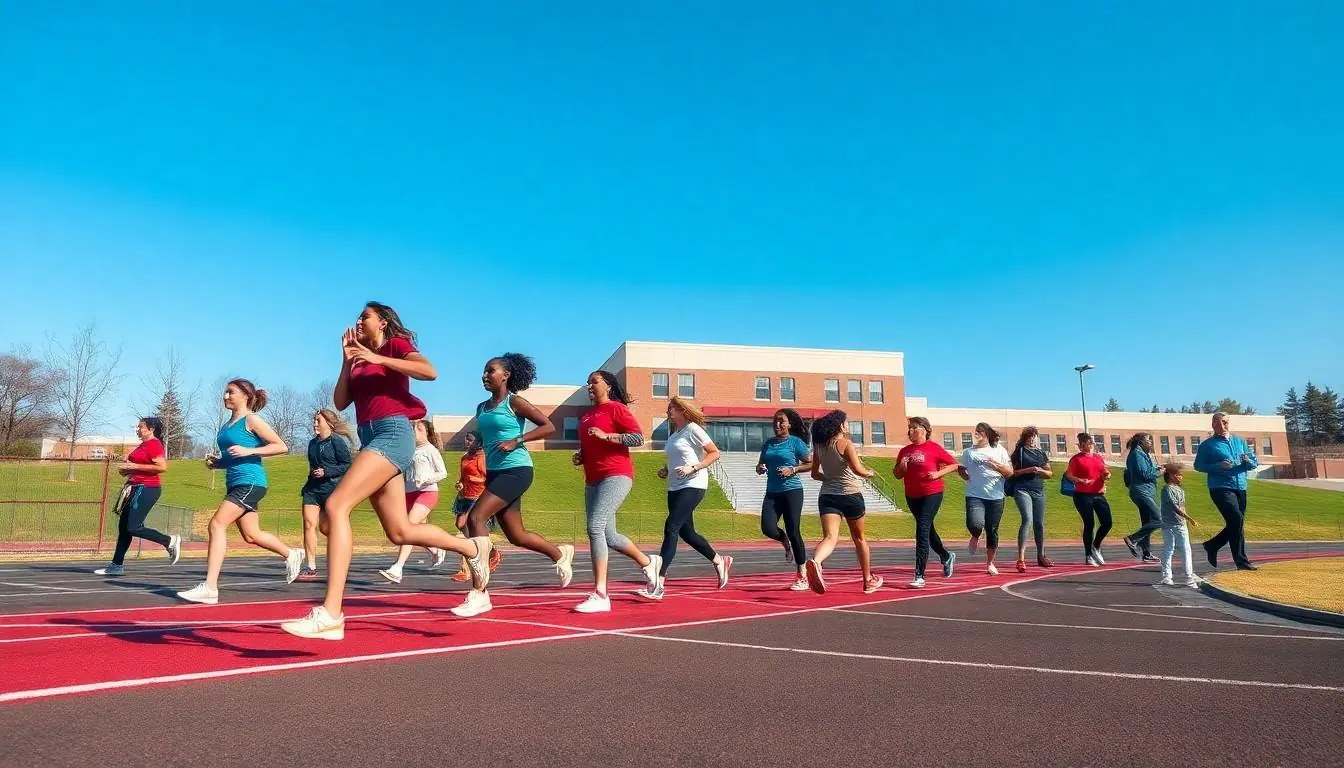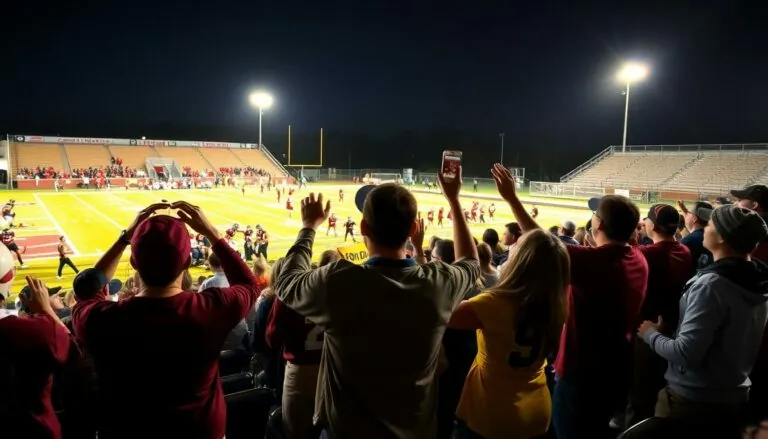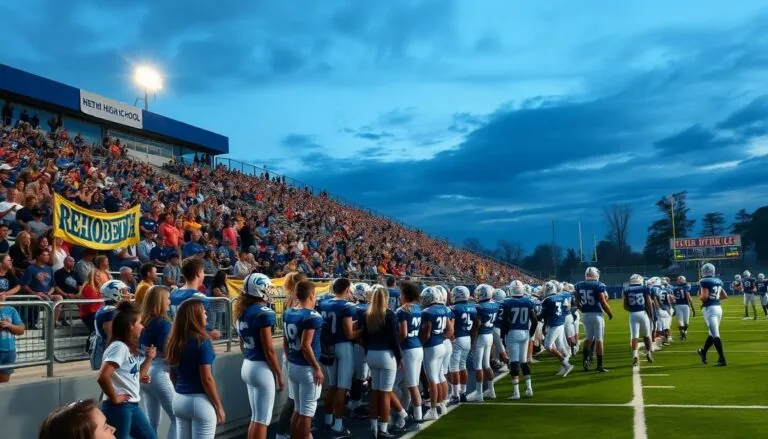Table of Contents
ToggleHigh school tracks often sit quietly under the sun, waiting for someone to lace up their sneakers and hit the pavement. But are these tracks open for public use? The answer might surprise you. Many people assume they’re off-limits, reserved solely for teenage sprinters and gym class heroes, but that’s not always the case.
Overview Of High School Tracks
High school tracks primarily serve athletic teams and physical education classes. Access often extends beyond just students and athletes. Many schools allow public use of these tracks, particularly during non-school hours. Communities benefit from this access, utilizing tracks for walking, running, and other fitness activities.
Guidelines vary by location, however. Some districts implement rules that govern public access, while others encourage community engagement. As a result, checking with local schools or district policies can clarify usage permissions.
Typically, availability aligns with school schedules. When school is not in session, tracks mostly open to public use. Weekends and holidays often present prime opportunities for community members to enjoy the facilities.
Features of high school tracks often include lanes designed for various activities. Standard tracks consist of a four-lane or eight-lane configuration. Treating these lanes with care benefits everyone who uses the track. Included in some facilities are additional features like field areas for activities such as soccer or football.
Many communities benefit from organized groups that monitor and promote public access. Local running clubs and fitness groups frequently utilize high school tracks for training and events. Connecting with such organizations fosters a more active community atmosphere.
High school tracks may provide valuable resources for public fitness activities, encouraging community members to stay active and healthy. Checking local guidelines ensures a convenient and respectful usage experience.
Access Policies
High school tracks can serve the public and often have specific access policies. Community members frequently find opportunities to use tracks outside of school activities.
General Access Rules
Public access typically aligns with school schedules. When schools aren’t in session, tracks usually open for community use. Personas engaging in fitness and recreation often enjoy these facilities during evenings, weekends, and holidays. Most schools provide guidelines that detail acceptable use and hours available. Etiquette remains important; users should maintain a respectful environment for all. Important notices about maintenance or closures will appear on school websites or local community boards.
Differences By Location
Access policies differ based on local regulations and school district rules. Some high schools impose restrictions on track access due to safety concerns or maintenance schedules. In urban areas, tracks may have higher availability, while rural institutions might enforce stricter access control. Checking with local schools ensures awareness of any variances in rules or usage times. Certain facilities, particularly in more populated regions, could even host organized events promoting community fitness. Understanding specific guidelines maximizes enjoyment of the track experience.
Benefits Of Public Access
Public access to high school tracks fosters various community benefits. Communities gain opportunities to engage and promote health.
Community Engagement
Access to tracks encourages local individuals to participate in fitness activities. Walking, jogging, or running on tracks allows them to socialize and connect with neighbors. Schools often host fitness events that welcome families and residents, strengthening community bonds. These gatherings help cultivate relationships among residents while nurturing a shared commitment to health and wellness. Organizing group runs or fitness challenges further increases participation and attracts diverse groups within the community. Local fitness organizations may partner with schools to enhance activities, ensuring inclusivity and fun for participants of all ages.
Health and Fitness Opportunities
Utilizing high school tracks provides significant health and fitness advantages. Walking or running on well-maintained surfaces reduces the risk of injuries compared to uneven terrains. Regular access promotes exercise in a safe environment, making it easier for individuals to establish workout routines. Community members gain access to tracks for running clubs or personal fitness training, enhancing their fitness journey. Engaging in physical activities boosts mental health and lowers stress levels. Motivating friends or family to join encourages consistent exercise and fosters a healthier lifestyle. Local schools often contribute to overall community well-being by offering these vital resources for fitness.
Limitations And Challenges
High school tracks face several limitations and challenges that can affect public access. Understanding these issues is essential for potential users.
Maintenance Issues
Maintenance issues frequently arise, impacting the usability of tracks. Regular upkeep ensures safety and can involve resurfacing, cleaning, and general repairs. Some schools have limited budgets for facility maintenance, resulting in neglected surfaces that may not be suitable for public use. Track availability may reduce during maintenance periods, pushing community members to find alternative locations. Maintaining a reliable schedule helps schools keep tracks in good condition while supporting local users.
Scheduling Conflicts
Scheduling conflicts pose another challenge for public access. High school tracks are often booked for athletic practices, competitions, and events, limiting available times for community usage. In some cases, peak school hours or weekend events could restrict access significantly. Users typically find that evenings and holidays offer the best chances for access, but this can vary widely depending on school district policies. Checking schedules ahead of time increases the likelihood of finding open tracks, helping to avoid disappointment.
Conclusion
High school tracks can be valuable resources for the community when access is permitted. They offer a space for individuals to engage in fitness activities while promoting health and social connections. Understanding the specific access policies of local schools is essential for maximizing the benefits of these facilities. While challenges like maintenance and scheduling conflicts may arise, many schools strive to keep their tracks available for public use during non-school hours. By checking with local institutions and adhering to guidelines, community members can enjoy the advantages of these well-maintained tracks and contribute to a healthier lifestyle.








